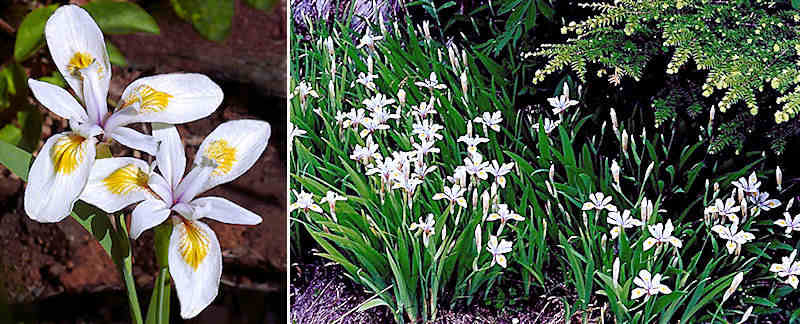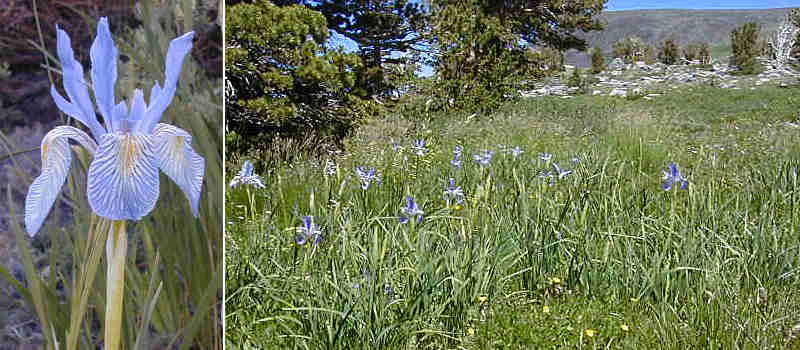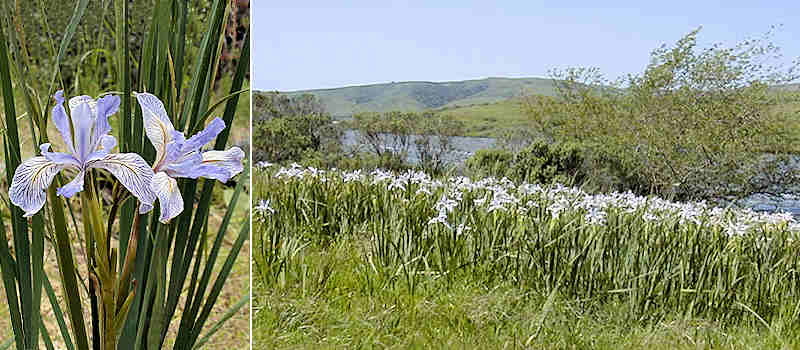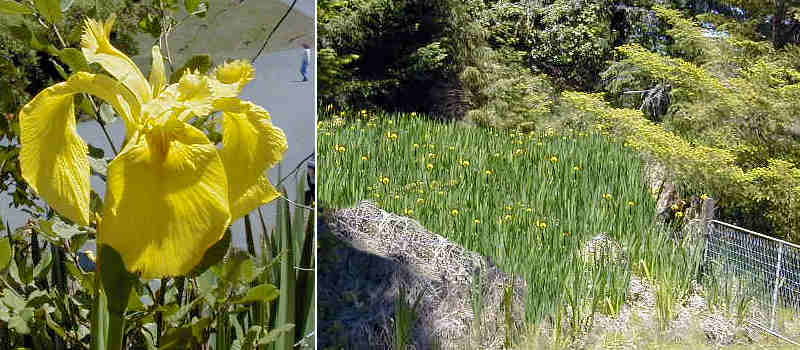Wild iris of the west - the non-PCIs:
The non-Pacifica Western Iris
With few exceptions, Pacifica iris (series Californicae) are the only ones you'll find growing wild in the western states. The exceptions are three old North American residents, here since the Ice Ages, and a recent garden escapee sometimes associated with long abandoned rural home sites.
1. The Clackamas iris is western North America's only native CRESTED (Lophiris, or "Evansia") iris. It sometimes grows in the same areas as our Oregon iris, and scientists at first thought it could be an unusual Pacifica species. But it never felt right in the Californicae – with its chromosome number of N=14 (the Californicae all have N=20), leaves arranged in broad fans, multi-forked flower stalks, and colonies that grow by extending underground roots. Its nearest relatives live across the continent in the eastern US (I. lacustris and I. cristata) or in Asia. The story of how Iris tenuis came to be isolated in the Douglas fir forests along the Clackamas and Molalla rivers in western Oregon suggests a fascinating Ice Age history.

Iris tenuis, during an SPCNI expedition around Mount Hood, where it was growing "in such profusion that it covers
every sunny inch of the ground." Lewis and Adele Lawyer, ALMANAC, Fall 1995.
2. Western blue flag (Iris missouriensis)
Western Blue Flag, Iris missouriensis, (series LONGIPETALAE) ranges widely at higher elevations on the eastern side of the Cascade and Sierra Nevada mountains from southern Canada to northern Mexico, and east to the Dakotas. It graces alpine meadows and pastures with ground water near the surface. The three sepals (falls) often all fold down sharply, as if to entice potential pollinators flying in close to the ground from any angle. Grazing livestock avoid the pungent, bitter-tasting leaves, so it thrives in grasslands to the point that cattlemen sometimes consider it a pest.

Iris missouriensis, Pacific Crest Trail, Carson Pass near Winnemucca Lake, El Dorado County, California.
July 19, 1999. Steve and Anne Ayala
Additional photos:
- Monitor Pass, Alpine County, California
3. Central Coast iris (Iris longipetala)
Iris longipetala might be a coastal strain of Iris missouriensis that became isolated during the Ice Ages and over time adapted to a Mediterranian climate environment. There are several differences: stems tend to be taller (30-60 cm, vs. 20-50 cm for I. missouriensis, with more flowers on each stem (3 to 6 vs. 1-3 for I. missouriensis); and the lower bracts seldom dry out into a parchment-like skirt below the flower head as in I. missouriensis. Nevertheless, one botanist reported that after a few generations to adjust, lowland I. longipetala plants moved to a garden in the Sierra Nevada mountains looked and behaved like I. missouriensis.

Iris longipetala, Nicasio Reservior, Marin County, California. May 10, 1999. Steve Ayala.
Additional photos:
- Nicasio Reservoir, Marin County, California
4. Yellow flag (Iris pseudacorus)
Iris pseudacorus (series LAEVIGATAE) is an attractive marsh dweller from Eurasia, often used in wetland landscaping. White flowered populations are occasionally seen. It easily escapes from gardens, and it has become naturalized in much of temperate North America. Root pieces washed out during a flood can establish new colonies downstream. As in the photo below, yellow flag iris sometimes marks the place where an old homestead disappeared long ago.

Iris pseudacorus growing along a seep beside King Ridge Road, Sonoma County, California. May 15, 1999. Steve and Anne Ayala.